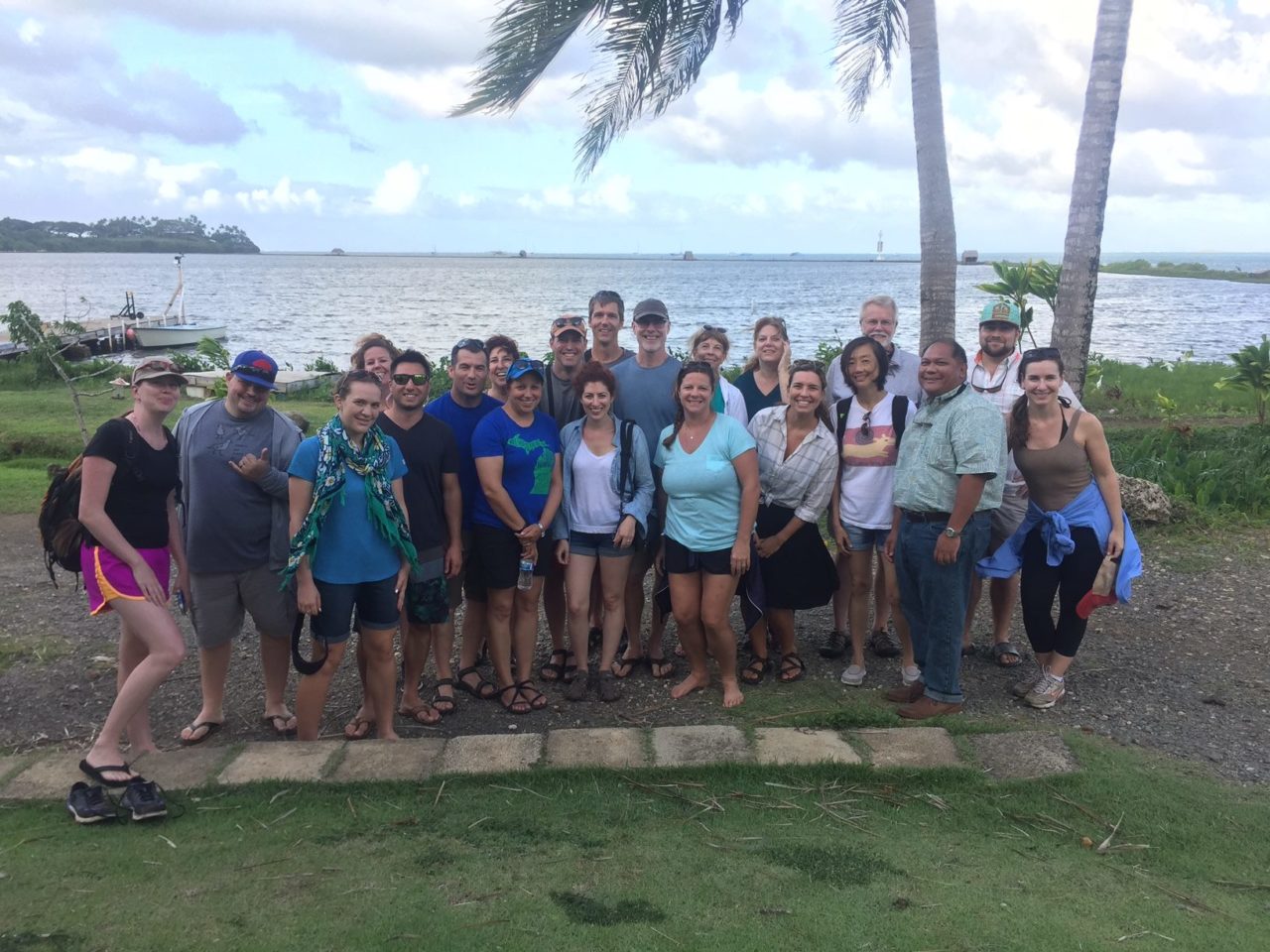“Waiwai”: Protecting Hawaii’s Wealth of Coastal Resources
Published by Ocean Conservancy
Ahupua‘a are traditional Native Hawaiian land management systems for self-sustaining communities. Each ahupua‘a delineates a strip of land from the mountains to the ocean, and contains nearly all the resources needed for survival.
The upland forest area of the mountains is called wao akua, “the realm of the gods.” It is believed that the forest is the physical manifestation of the spirit world. As water streams down the mountainside into wao kanaka, it enters the “realm of man” to be used in agriculture, aquaculture and other human needs.
For the Native Hawaiians, protecting watershed resources was of critical importance, and the ahupua‘a system was designed to protect from irresponsible usage. It’s no wonder that the Hawaiian word for ‘fresh water’ is wai and the Hawaiian word for ‘wealth and prosperity’ is waiwai.
Nestled at the base of the Ko‘olau mountain range, windward O‘ahu’s He‘eia ahupua‘a is surrounded by lush rainforests and the beautiful beaches at the Kane‘ohe waterfront.
He‘eia ahupua‘a is a 1,384-acre area that encompasses He’eia State park, He‘eia fishpond, He‘eia wetlands and stream, Moku o Lo‘e (Coconut Island), and the Kāne‘ohe Bay. The area contains upland, estuarine and marine habitats including Hawaii’s only barrier reef, making it a vibrant marine ecosystem teeming with life.
Due to He‘eia’s environmental and cultural significance, on May 21, 2014, former Governor Abercrombie officially nominated He‘eia to the National Estuarine Research Reserve System (NERRS). NERRS was created through the Coastal Zone Management Act (CZMA) of 1972 which is administered through National Oceanic and Atmospheric Administration (NOAA). The nomination received support from the Native Hawaiian community, represented by the Ko‘olaupoko Hawaiian Civic Club (KHCC) and the current caretakers of the estuary, including Paepae o He‘eia and Kako‘o ‘Ōiwi.


After three years of tireless efforts, in January 2017 NOAA officially announced the establishment of the He‘eia National Estuarine Research Reserve, making it the 29th official NERRS in the national system and first new reserve in over six years.
“It was definitely a big success story,” says Leo Asuncion, Director of the Office of Planning for the State of Hawaii. “Community leaders worked hard to get this issue to Governor Abercrombie and subsequently current Governor Ige, and NOAA were key partners.”
In a press release about the designation, W. Russell Callender, assistant NOAA administrator for the National Ocean Service stated, “It’s our partnerships that make the reserve system successful; we can tap into the strength of the broader reserve system and find innovative solutions to local, coastal challenges. By working closely with University of Hawaii’s Hawai‘i Institute of Marine Biology (HIMB) and the state, and bringing scientists, community leaders, educators and the public together, we can preserve some of Hawaii’s significant cultural and natural resources for future generations.”
The He‘eia ahupua‘a designation spearheaded by Asuncion’s Office of Planning through its Coastal Zone Management Program was a novel approach to integrating traditional Native Hawaiian ecological practices with modern scientific research and knowledge to sustainably manage the estuary.
The three main components of the He‘eia NERRS include research, education and stewardship. The goal is to better understand the effects of both human activities and climate change to support informed decision making regarding the health and perpetuity of the He‘eia estuary and all of Hawaii’s coastal and marine resources.


“Integrating traditional ecological knowledge and western science brought together two significantly related concepts of understanding the ecosystem and supported the uniqueness of the He‘eia NEER. It actually bonded the community, the scientists, and all stakeholders” says Asuncion.”
The success of the He‘eia NERRS designation highlights the important role that NOAA plays in funding important preservation and research projects like NERRS. Despite their pivotal role in preserving marine and coastal resources across the country, in February, the Trump Administration proposed over $1 billion in cuts to NOAA for fiscal year 2019, including eliminating funding for the NERRS.
“While the desire to become a NEER came from the community, it was NOAA’s designation process that we were required to follow.” says Asuncion. “Without NOAA’s resources, and their support and commitment, to the designation process, He‘eia would likely not be a part of the NERRS today.”
Asuncion’s words highlight the importance of supporting NOAA, which works to preserve timeless ecological and cultural landmarks like He‘eia ahupua‘a. Both NOAA and ocean champions like Asuncion embody the ethos of ‘āina momona, sustainably managing the richness and abundance of nature for future generations.
“As someone from Hawaii the ocean is just part of my being,” says Asuncion, “Protecting and preserving the ocean is something that’s been ingrained in me.
*To see other stories about why NOAA funding is important click here.
Sign up for our emails!
The post “Waiwai”: Protecting Hawaii’s Wealth of Coastal Resources appeared first on Ocean Conservancy.
Read the full article at: https://oceanconservancy.org/blog/2018/08/15/waiwai-protecting-hawaiis-wealth-coastal-resources/



